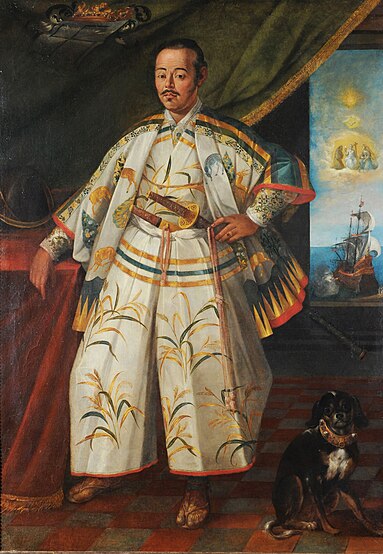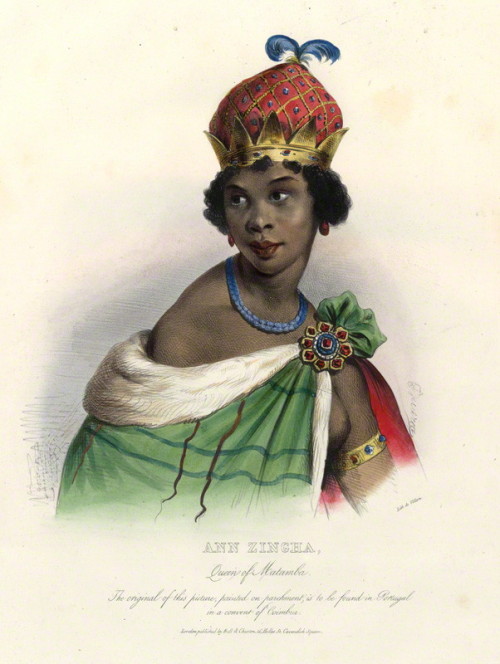The Stono Rebellion (sometimes called Cato's Conspiracy or Cato's Rebellion) was a slave rebellion that commenced on 9 September 1739, in the colony of South Carolina. It was the largest slave uprising in the British mainland colonies prior to the American Revolution.
One of the earliest known organized rebellions in the present United States, the uprising was
led by native Africans who were Catholic and likely from the Kingdom of Kongo, which had been Catholic since 1491.
Some of the Kongolese spoke Portuguese. Their leader, Jemmy (referred to in some reports as "Cato", and probably a slave belonging to the Cato, or Cater, family who lived just off the Ashley River and north of the Stono River)
was a literate slave who led 20 other enslaved Kongolese, who may have been former soldiers, in an armed march south from the Stono River (for which the rebellion is named).
They recruited nearly 60 other slaves and killed 22–25 whites before being intercepted by the South Carolina militia near the Edisto River. In that battle, 20 whites and 44 slaves were killed, and the rebellion was largely suppressed. A group of slaves escaped and traveled another 30 miles (50 km) before battling a week later with the militia. Most of the captured slaves were executed; a few survived to be sold to the West Indies.
In response to the rebellion, the South Carolina legislature passed the Negro Act of 1740 restricting slave assembly, education, and movement. It also enacted a 10-year moratorium against importing African slaves, and established penalties against slaveholders' harsh treatment of slaves. It required legislative approval for manumissions, which slaveholders had previously been able to arrange privately.
Local factors
Since 1708, the majority of the population of the South Carolina colony were slaves, as importation of laborers from Africa had increased in recent decades with the expansion of cotton and rice cultivation. This was what was called the Plantation Generation by the historian Ira Berlin. Given the dramatic increase in importation, most of the slaves were native Africans and
many in South Carolina were from the Kingdom of Kongo. Numerous slaves had first been held in the British West Indies before being brought to South Carolina.
The slaves may have been inspired by several factors to mount their rebellion.
Accounts of slaves' gaining freedom by escaping to Spanish-controlled Florida gave the Carolina slaves hope; the Spanish had issued a proclamation and had agents spread the word about giving freedom and land to slaves who got to Florida. Tensions between England and Spain over territory in North America made slaves hopeful of reaching Spanish territory
, particularly the free black community of Fort Mose, founded in 1738. In addition, a malaria epidemic had killed many whites in Charleston, weakening the power of slaveholders. Lastly, historians have suggested the slaves organized their revolt to take place on Sunday, when planters would be occupied in church and might be unarmed. The Security Act of 1739 (which required all white males to carry arms even to church on Sundays) had been passed in August but not fully taken effect; penalties were supposed to begin after 29 September.
African background
Jemmy, the leader of the revolt,
was a literate slave described in an eyewitness account as "Angolan." Historian John K. Thornton has noted that, because of patterns of trad
e, he was more likely from the Kingdom of Kongo in west Central Africa, which had long had relations with Portuguese traders.
His cohort of 20 slaves were also called "Angolan", and likely also Kongolese. The slaves were described as Catholic, and some spoke Portuguese, learned from the traders operating in the Kongo Empire at the time. The patterns of trade and the fact that the Kongo was a Catholic nation point to their origin there. The kingdom of Kongo had voluntarily converted to Catholicism in 1491; by the 18th century, the religion was a fundamental part of its citizens' identity.
The nation had independent relations with Rome.
Portuguese was the language of trade as well as the one of the languages of educated people in Kongo.
The Portuguese-speaking slaves in South Carolina were more likely to learn about offers of freedom by Spanish agents. They would also have been attracted to the Catholicism of Florida. Because Kongo had been undergoing civil wars, more people had been captured and sold into slavery in recent years,
among them trained soldiers. It is likely that Jemmy and his rebel cohort were such military men,
as they fought hard against the militia when they were caught, and were able to kill 20 men.
The events of the revolt
On Sunday, 9 September 1739, Jemmy gathered 20 enslaved Africans near the Stono River, 20 miles (30 km) southwest of Charleston. This date was important to them as the Catholic celebration of the Virgin Mary's nativity; like the religious symbols they used, taking action on this date connected their Catholic past with present purpose.[5] The Africans marched down the roadway with a banner that read "Liberty!", and chanted the same word in unison. They attacked Hutchenson's store at the Stono River Bridge, killing two storekeepers and seizing weapons and ammunition.
Raising a flag, the slaves proceeded south toward Spanish Florida, a well-known refuge for escapees. On the way, they gathered more recruits, sometimes reluctant ones, for a total of 80. They burned seven plantations and killed 20–25 whites along the way. South Carolina's Lieutenant Governor William Bull and four of his friends came across the group while on horseback. They left to warn other slaveholders. Rallying a militia of planters and slaveholders, the colonists traveled to confront Jemmy and his followers.
The next day, the well-armed and mounted militia, numbering 20–100 men, caught up with the group of 80 slaves at the Edisto River. In the ensuing confrontation, 20 whites and 44 slaves were killed. While the slaves lost, they killed proportionately more whites than was the case in later rebellions. The colonists mounted the decapitated heads of the rebels on stakes along major roadways to serve as warning for other slaves who might consider revolt.
The lieutenant governor hired Chickasaw and Catawba Indians and other slaves to track down and capture the slaves who had escaped from the battle. A group of the slaves who escaped fought a pitched battle with a militia a week later approximately 30 miles (50 km) from the site of the first conflict. The colonists executed most of the rebellious slaves; they sold other slaves off to the markets of the West Indies.
Aftermath
Over the next two years, slave uprisings occurred independently in Georgia and South Carolina,
perhaps inspired, as colonial officials believed, by the Stono Rebellion. Conditions of slavery were sufficient cause. Planters decided they had to develop a slave population w
ho were native-born, believing they were more content if they grew up enslaved. Attributing the rebellion to the recently imported Africans, planters decided to cut off the supply and enacted a 10-year moratorium on slave importation through Charleston.
After they opened it up to international trade again, they imported slaves from areas other than the Congo-Angolan region.
In addition, the legislature passed the Negro Act of 1740 to tighten controls: it required a ratio of one white to ten blacks on any plantation. It prohibited slaves from growing their own food, assembling in groups, earning money, or learning to read. In the uncertain world of the colony, several of the law's provisions were based on the assumption that whites could effectively judge black character; for instance, whites were empowered to examine blacks who were traveling outside a plantation without passes, and to take action.[10] The legislature also worked to improve conditions in slavery; it established penalties for masters who demanded excessive work or who brutally punished slaves (these provisions were difficult to enforce, as the law did not allow slave testimony against whites.) They also started a school to teach slaves Christian doctrine.
At the same time, the legislature tried to prevent slaves from being manumitted, as the representatives thought that the presence of free blacks in the colony made slaves restless. It required slaveholders to apply to the legislature for permission for each case of manumission, which had formerly been arranged privately. South Carolina kept these restrictions against manumission until slavery was abolished after the American Civil War.
The legislature's action related to manumissions likely reduced the chances that planters would free the mixed-race children born of their (or their sons') liaisons with enslaved women, as they did not want to subject their sexual lives to public scrutiny.[12] Such relationships continued, as documented in numerous sources. For instance, by 1860 the 200 students at Wilberforce University in Ohio, established for blacks, were mostly mixed-race children of wealthy southern planter fathers.
Now named the Stono River Slave Rebellion Site, the Hutchinson's warehouse site where the revolt began was declared a National Historic Landmark in 1974. A South Carolina Historical Marker has also been erected at the site.










